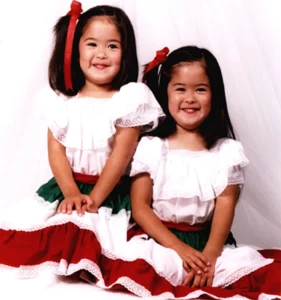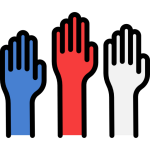From Parts to Whole: Embracing My AAPI Latino Identity

 What are you? Where are you from?
What are you? Where are you from?
For most of my life, I’ve had my answer to these questions well-prepared: I’m half Japanese, a quarter Mexican, and a quarter white. Little did I know that these questions and my response chipped away at my self-perception. I saw myself in parts, not fully belonging to any single identity.
My mom is from Hawai’i and my dad is from Texas. Each of their families have been in the United States for several generations, leading to my hapa and chicana cultural identity.
I have physical characteristics in common with each side of my family– thick dark hair, almond eyes, a non-pointed nose, thick calves, and lighter skin that tans (not burns) easily.
I get to experience my heritage through holidays, habits at home, cultural values, and food. As a child, it wasn’t uncommon to have an American breakfast, Mexican lunch, Hawaiian dinner, and Japanese dessert. Yet, when I’m with each family I don’t fully feel like I belong. Not because my family makes me feel this way, but rather because of my own racial impostor syndrome.
I don’t look “fully” Japanese, Mexican, or white; I was born in the US; and I only speak English. I have never come across someone with the same ethnic and cultural mix as me (except for my twin sister).
Do I get to be in AAPI spaces? What about Latino spaces?
Many of my lived experiences answer these questions with both “yes” and “no”. So where do I fit in? Where does my voice matter?
I’ve dug into research, blogs, books, and podcasts about mixed-race experiences in search of shared experiences and a sense of belonging. While I’ve found mixed-race community media, I have primarily found that it centered Black/white, AAPI/white, and Latino/white biracial identities. Though a lot of these experiences resonate with me, I have never found anything about being tri-racial or being AAPI Latino. Until now.

The UCLA Latino Policy and Politics Institute presents the first research I’ve ever read on AAPI Latinos. It makes me feel seen in a new way for the very first time. I never knew that some of the things that have made me stand out from many Asian Americans and Latino Americans are shared by other AAPI Latinos.
Most (86%) are US-born, like me. Most (68%) grew up speaking only English, like me. AAPI Latinos are also very young, almost half (46%) being 18 or younger. And most live in California, Hawai’i, and Texas. Though my families are from Hawai’i and Texas, growing up as a military child never allowed me to live in these states and find community with other AAPI Latinos, adding to my assumption that they didn’t exist.

I now know that our overlooked demographic group is here and growing at a rate faster than the Asian American, Pacific Islander, and Latino American demographic groups are on their own. UCLA’s research shows that the AAPI Latino population more than doubled from 350,000 in 2000 to 886,000 in 2022.
Like many mixed people, AAPI Latinos have often seen themselves in parts and have felt compelled to choose one identity over the other in different contexts. But perhaps now, we do have a single identity: We are AAPI Latinos.
The beauty in having multiple ethnic, racial, and cultural identities is the ability to experience and participate in them all, while maintaining curiosity and compassion for other identities that aren’t your own.
With growing recognition and a new door opened into AAPI Latino research, people like me can better see our unique experiences as shared and worthy of acknowledgment.
1. University of California Los Angeles, Data Brief: AAPI Latinos in the United States: An Overview of the Growing Demographic. May 22, 2024. https://latinodatahub.org/#/research/aapi-latinos-in-the-united-states-an-overview-of-the-growing-demographic
2. Pew Research Center shows that the Asian American population grew 81% from 2000 to 2019 (https://www.pewresearch.org/short-reads/2021/04/09/asian-americans-are-the-fastest-growing-racial-or-ethnic-group-in-the-u-s/) and that the Hispanic American population grew 76% from 2000 to 2020 (https://www.pewresearch.org/science/2022/06/14/a-brief-statistical-portrait-of-u-s-hispanics/). The US Census shows that the Pacific Islander population grew 83% from 2000 to 2020 (https://ow.ly/rB0I50SnFgF and https://www.census.gov/library/publications/2001/dec/c2kbr01-14.html).








